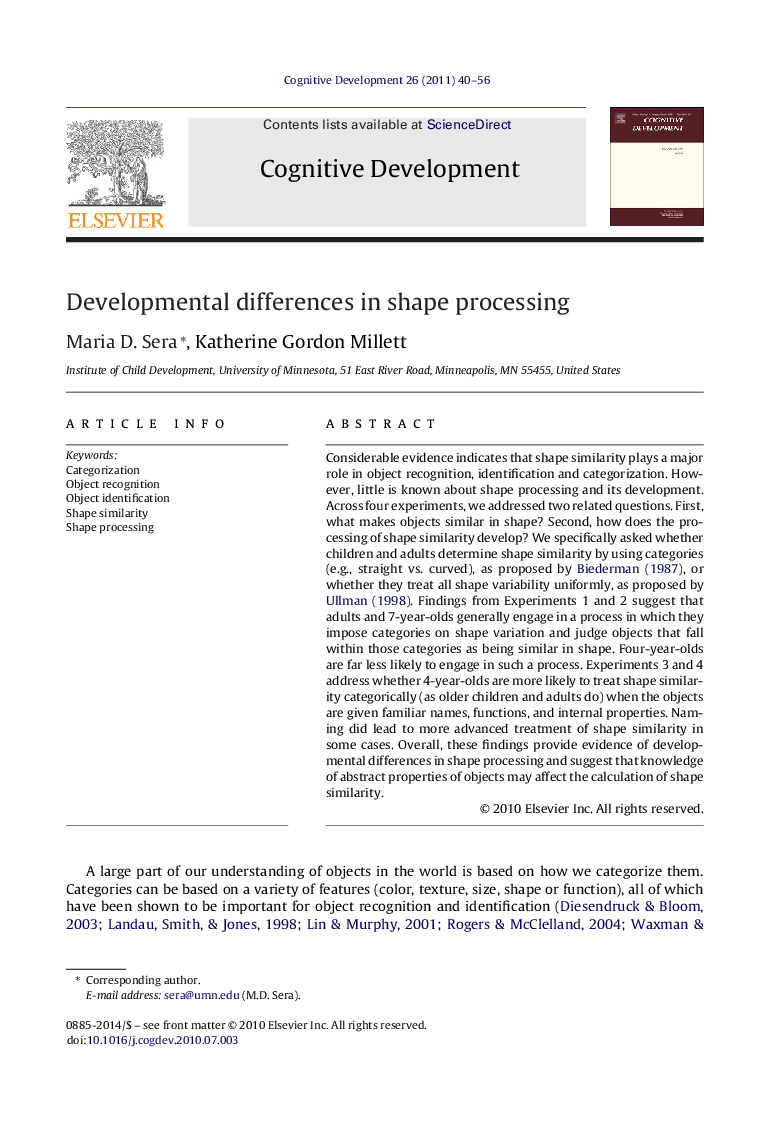| Article ID | Journal | Published Year | Pages | File Type |
|---|---|---|---|---|
| 916639 | Cognitive Development | 2011 | 17 Pages |
Considerable evidence indicates that shape similarity plays a major role in object recognition, identification and categorization. However, little is known about shape processing and its development. Across four experiments, we addressed two related questions. First, what makes objects similar in shape? Second, how does the processing of shape similarity develop? We specifically asked whether children and adults determine shape similarity by using categories (e.g., straight vs. curved), as proposed by Biederman (1987), or whether they treat all shape variability uniformly, as proposed by Ullman (1998). Findings from Experiments 1 and 2 suggest that adults and 7-year-olds generally engage in a process in which they impose categories on shape variation and judge objects that fall within those categories as being similar in shape. Four-year-olds are far less likely to engage in such a process. Experiments 3 and 4 address whether 4-year-olds are more likely to treat shape similarity categorically (as older children and adults do) when the objects are given familiar names, functions, and internal properties. Naming did lead to more advanced treatment of shape similarity in some cases. Overall, these findings provide evidence of developmental differences in shape processing and suggest that knowledge of abstract properties of objects may affect the calculation of shape similarity.
